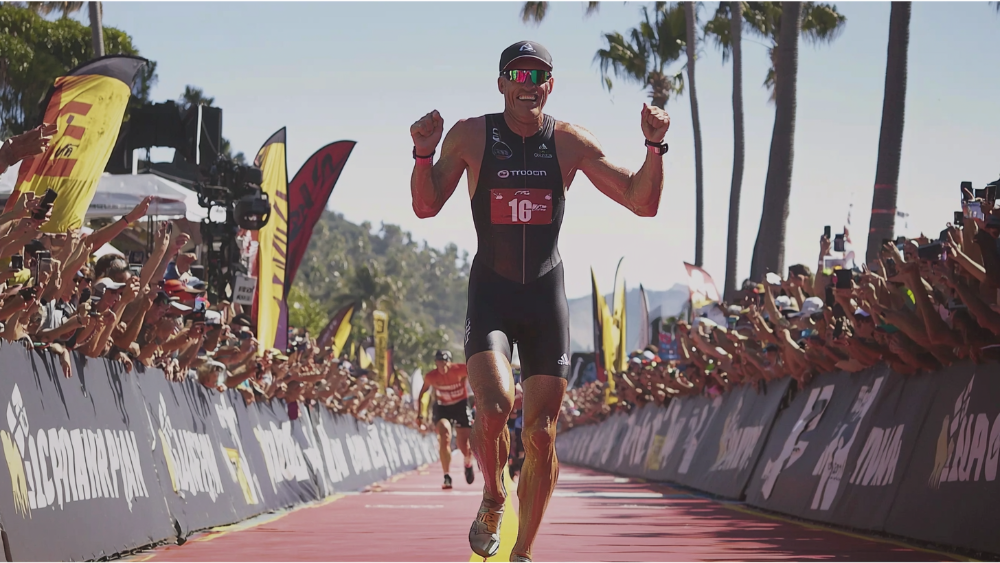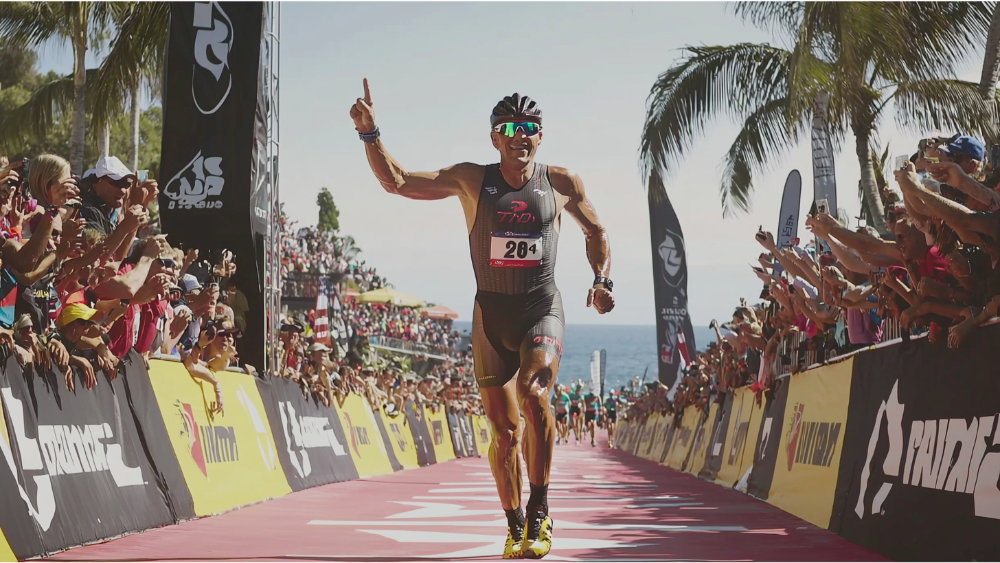The Ironman triathlon is renowned as one of the most grueling endurance events in the world. The Ironman consists of a 2.4-mile swim, 112-mile bike ride, and 26.2-mile marathon, challenging athletes’ physical and mental endurance since 1978.The number of finishers showcases the growth of endurance sports and the increasing interest in triathlons. This evolution reflects a broader trend toward fitness and personal challenges, making the Ironman a significant milestone for many athletes.
Historical Context
The Birth of Ironman
The Ironman concept originated when a group of athletes in Hawaii debated which sports were the most challenging. They decided to combine the three longest endurance races: the Waikiki Roughwater Swim, the Around-Oahu Bike Race, and the Honolulu Marathon. This bold idea led to the first Ironman event on February 18, 1978, in Kona, Hawaii. Only 15 brave souls started the race, but 12 finished, making history.
Growth Over the Decades
Over the years, the Ironman brand has expanded tremendously. By the 1990s, Ironman races began popping up globally, with an increasing number of events each year. In the early 2000s, the World Triathlon Corporation (WTC), which oversees Ironman events, introduced a series of Ironman 70.3 races (half the distance of a full Ironman), making the challenge more accessible. The combination of these two formats has contributed significantly to the rising number of participants.
Current Participation Statistics
Global Participation Numbers
Recent estimates suggest that around 1 million athletes have successfully completed an Ironman race since the event’s inception. This impressive milestone reflects the enduring appeal of this challenging competition among endurance sports enthusiasts.
In 2019, a particularly significant year for the Ironman series, approximately 300,000 participants took part in events across the globe, highlighting the sport’s expanding popularity. This surge in participation showcases not only the increasing interest in triathlons but also the determination of athletes to conquer the grueling challenges that come with completing an Ironman.
Breakdown by Gender
Historically, the Ironman triathlon has seen a male-dominated field. For example, during the Ironman World Championship, around 72% of participants are male.
However, the tide is changing, with more women taking up the challenge. Recent statistics show a slow but steady increase in female participation, with women now comprising about 28% of competitors in many events
This gradual shift is essential for fostering inclusivity and encouraging a more diverse range of athletes to join the ranks of Ironman finishers.
Demographics of Participants
The demographics of Ironman participants are diverse, spanning a wide range of ages and backgrounds. Athletes as young as 18 and as seasoned as 80 have completed Ironman races. Interestingly, the average age of Ironman finishers tends to be in the 30s to 40s, with many participants being seasoned athletes
This age range reflects the long-term commitment required to train for and successfully complete such a demanding event.
Ironman Events and Their Popularity
Major Ironman Events Worldwide
Numerous Ironman events take place worldwide, with some of the most prestigious including the Ironman World Championship in Kona, Hawaii; Ironman California; and Ironman France. These races draw thousands of athletes from various backgrounds and receive extensive media attention, showcasing the dedication and skill of participants. The Ironman World Championship in Kona is especially renowned, representing the pinnacle of the sport. It serves as the grand finale for the year’s top competitors, all of whom qualify through stringent criteria.
Athletes who earn a spot in Kona have demonstrated exceptional endurance and commitment throughout their training and competition. The event features a grueling course that includes a 2.4-mile swim, a 112-mile bike ride, and a 26.2-mile marathon run, all set against the stunning backdrop of Hawaii’s landscape. The combination of challenging terrain, unpredictable weather, and the competitive atmosphere creates a truly unique experience for both competitors and spectators.
The allure of these prominent Ironman events not only motivates athletes to push their limits but also fosters a strong sense of community within the triathlon world. These competitions highlight the dedication and resilience of those who take on the Ironman challenge, making them memorable experiences for all involved.
Factors Influencing Participation
Several factors influence the growth of Ironman participation. Accessibility plays a significant role; as more races are organized globally, athletes have a wider variety of events to choose from. Additionally, the rise of triathlon clubs and training programs has made it easier for newcomers to get involved. Online communities and social media platforms also foster a sense of camaraderie among participants, inspiring more people to take on the Ironman challenge
Completion Rates and Challenges

Average Completion Rates
The completion rates for Ironman events vary but generally hover around 70% to 85%, depending on the specific race and conditions
Factors such as weather, course difficulty, and the experience level of the participants can significantly impact these rates. In comparison to other endurance events, Ironman completion rates are relatively high, indicating that athletes are well-prepared and committed to finishing
Common Challenges Faced by Participants
Training for an Ironman is no small feat. Athletes face numerous challenges, including balancing work, family commitments, and rigorous training schedules. Physical challenges such as injuries and mental hurdles like self-doubt and anxiety are common. Many participants recount their journeys, detailing the sacrifices made and the determination required to cross the finish line. These stories highlight the Ironman as not just a race but a profound personal journey
The Future of Ironman Participation
Trends in Endurance Sports
Looking ahead, the future of Ironman participation appears bright. With increasing interest in health and fitness, more individuals are drawn to the triathlon lifestyle. The introduction of more accessible formats, such as Ironman 70.3, encourages a broader audience to consider participation
Furthermore, the growth of virtual races and remote coaching has created fresh opportunities for aspiring athletes, enabling them to pursue their goals from anywhere and connect with expert guidance and support.
Increasing Popularity of Triathlons
The global triathlon community is witnessing a surge in popularity, with Ironman races at the forefront. Factors contributing to this trend include the visibility of professional triathletes, increased media coverage, and the influence of social media, where athletes share their training journeys and race experiences
These components motivate a new wave of athletes to embrace the challenge of finishing an Ironman, pushing their limits and striving for personal excellence in endurance sports and competition.
Conclusion
Summary of Key Points
In summary, the journey of Ironman participants reflects not only personal triumphs but also the evolution of a sport that has captured the hearts of many. From the modest beginnings of 15 competitors in 1978 to an estimated 1 million finishers today, the growth of the Ironman is a testament to the resilience and determination of athletes worldwide.
The Community Aspect of Ironman
The Ironman community is both vibrant and supportive, creating a unique environment where participants bond over their shared passion for endurance sports. This camaraderie plays a vital role in the experience, as athletes from all walks of life come together to encourage and uplift one another. The friendships formed during training sessions, races, and events create a sense of belonging that is crucial for many participants.
Being part of this community not only motivates individuals to push their limits but also provides emotional support during the demanding training process. Many athletes find that sharing their challenges and triumphs with others who understand their journey makes the experience far more rewarding. Whether you’re a seasoned competitor or a first-time participant, the encouragement and shared knowledge within the Ironman community enhance the overall experience.
Moreover, the sense of belonging fosters a spirit of collaboration and mutual respect, where athletes celebrate each other’s successes, regardless of their individual performance levels. This supportive atmosphere makes the journey to completing an Ironman even more meaningful, as it transforms a personal challenge into a collective celebration of resilience and determination. Embracing this community can lead to lasting friendships and unforgettable memories, enriching the Ironman experience.
Encouragement for Aspiring Athletes
For individuals considering taking on the Ironman challenge, one key message stands out: with commitment, consistent training, and a supportive community, finishing an Ironman is achievable. The journey is not just for seasoned athletes; newcomers to triathlons can also embark on this rewarding adventure.
Training for an Ironman requires dedication, as it involves rigorous preparation in swimming, biking, and running. However, this journey is not undertaken alone. The triathlon community is known for its encouragement and camaraderie, making the process more enjoyable and motivating. Connecting with fellow athletes, joining local clubs, or finding training partners can enhance your experience, providing invaluable support and accountability along the way.
As you progress, you’ll discover not only the physical benefits but also mental resilience and personal growth. Completing an Ironman is a significant accomplishment, symbolizing hard work and determination. Regardless of your current fitness level, the Ironman experience offers a unique opportunity to challenge yourself and achieve your goals. Embrace the journey, and you’ll find that the Ironman adventure is not just about crossing the finish line but also about the friendships formed, lessons learned, and the sheer joy of pushing your limits. The Ironman awaits you!

Leave a Reply